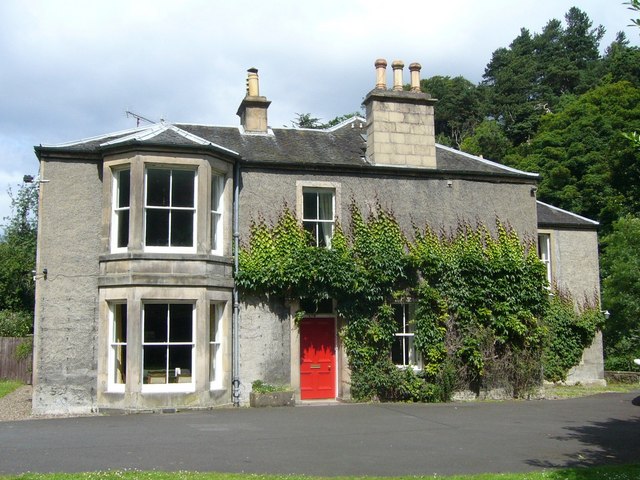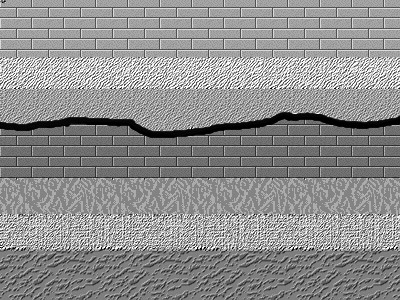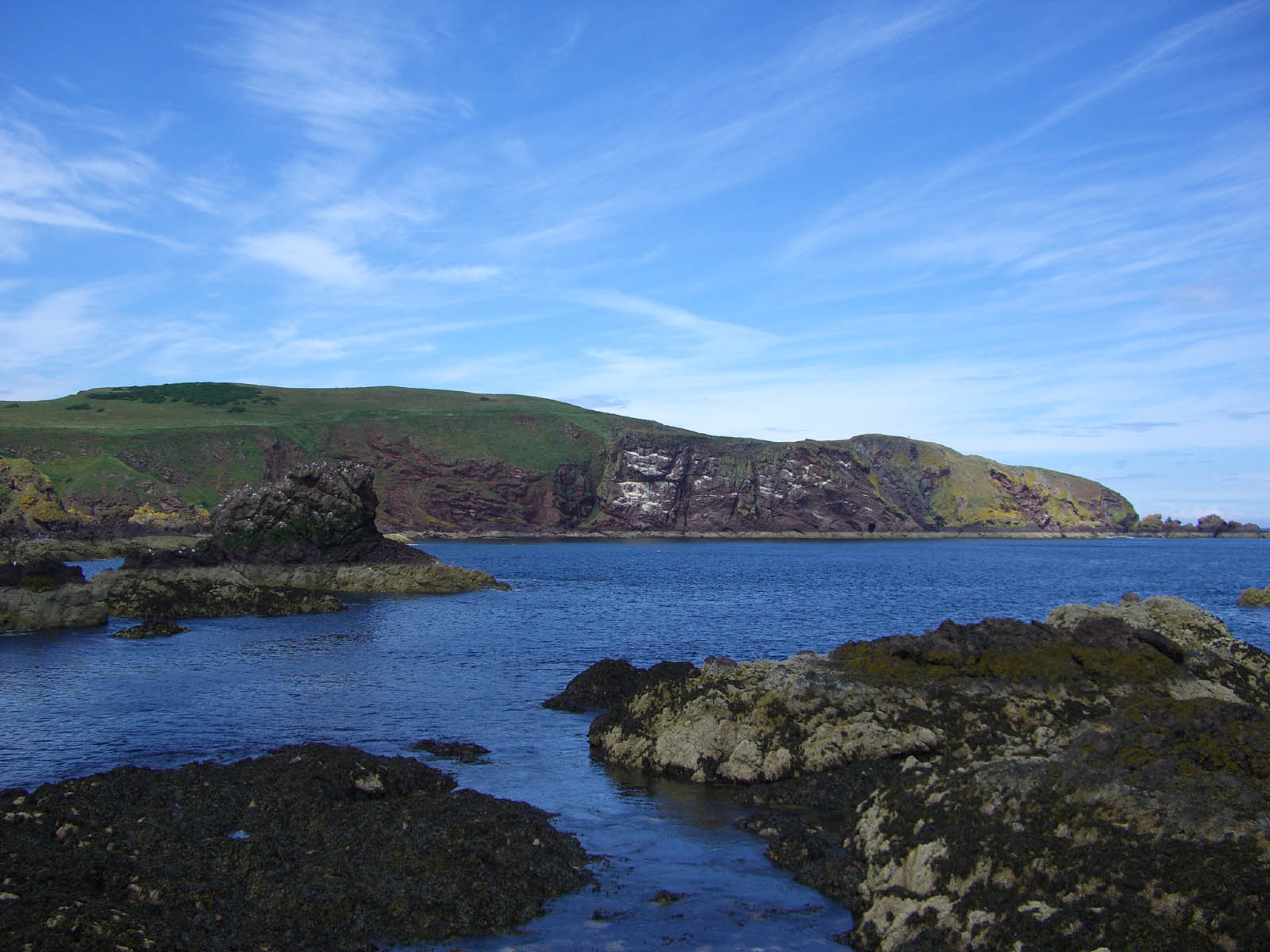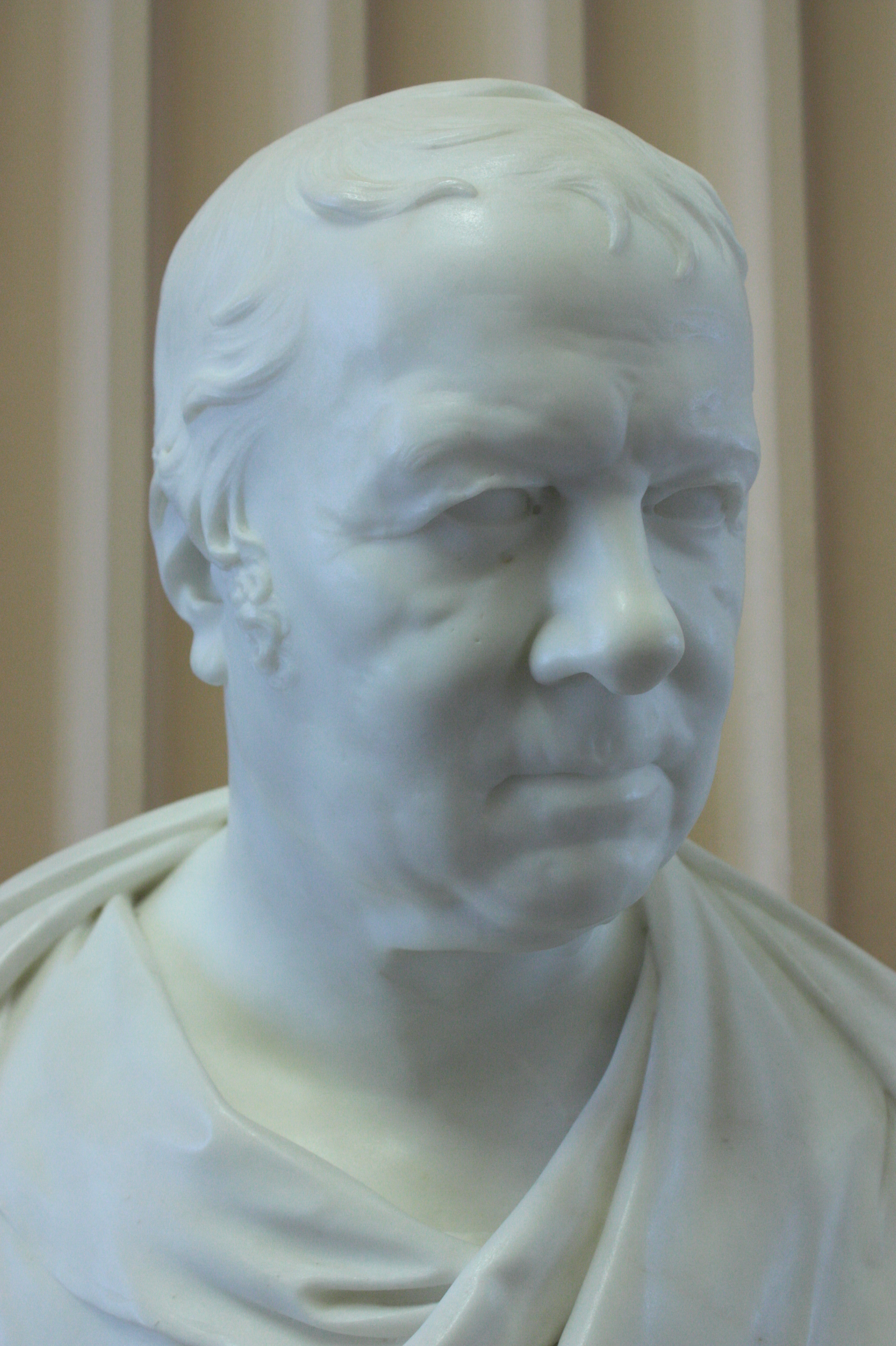|
Sir James Hall, 4th Baronet
Sir James Hall of Dunglass, 4th Baronet FRS FRSE (17 January 1761 – 23 June 1832) was a Scottish geologist and geophysicist. He was a Member of Parliament for St. Michael's borough ( Mitchell, Cornwall) 1807–1812. Education Hall was born at Dunglass Castle, East Lothian, to Magdalena, daughter of Sir Robert Pringle, 3rd Baronet, of Tillich, Gloucestershire and Sir John Hall, 3rd Baronet (died 1776). He studied at Christ's College, Cambridge, and the University of Edinburgh. As an Edinburgh student during the early 1780s, Hall studied chemistry under Joseph Black and natural history under John Walker. Though mineralogy was frequent taught in medical courses, Walker was one of the first professors to offer systematic lectures on the new field of geology. While attending Walker's popular course, Hall was taught how to use the chemical composition of minerals to determine relative age of strata. Walker also emphasized the geological relevance of chemists like William Cull ... [...More Info...] [...Related Items...] OR: [Wikipedia] [Google] [Baidu] |
Sir James Hall Of Dunglass (1761–1832)
''Sir'' is a formal honorific address in English language, English for men, derived from Sire in the High Middle Ages. Both are derived from the old French "" (Lord), brought to England by the French-speaking Normans, and which now exist in French only as part of "", with the equivalent "My Lord" in English. Traditionally, as governed by law and custom, Sir is used for men who are knights and belong to certain Order of chivalry, orders of chivalry, as well as later applied to baronets and other offices. As the female equivalent for knighthood is damehood, the ''suo jure'' female equivalent term is typically Dame. The wife of a knight or baronet tends to be addressed as Lady, although a few exceptions and interchanges of these uses exist. Additionally, since the late modern period, Sir has been used as a respectful way to address a man of superior social status or military rank. Equivalent terms of address for women are Madam (shortened to Ma'am), in addition to social honorif ... [...More Info...] [...Related Items...] OR: [Wikipedia] [Google] [Baidu] |
John Walker (naturalist)
John Walker FRSE (1731–1803) was a Scottish minister and natural historian. He was Regius professor of natural history at the University of Edinburgh from 1779 to 1803. He was joint founder of the Royal Society of Edinburgh in 1783 and moderator of the General Assembly of the Church of Scotland in 1790. Overview Walker was a protégé of chemist William Cullen and a colleague of Dugald Stewart, Joseph Black, and several other Edinburgh professors, who shaped the intellectual milieu of the Scottish Enlightenment. During his long career, he became a distinguished botanist, chemist, geologist, hydrologist, meteorologist, mineralogist, zoologist, and economic historian, as well as being a minister in the Church of Scotland. Walker was one of the main scientific consultants of his day, serving as an agricultural, industrial, or mining advisor to many influential Scottish landowners, including the judge advocate Lord Kames, George III's prime minister Lord Bute, and Lord Hopeto ... [...More Info...] [...Related Items...] OR: [Wikipedia] [Google] [Baidu] |
Unconformity
An unconformity is a buried erosional or non-depositional surface separating two rock masses or strata of different ages, indicating that sediment deposition was not continuous. In general, the older layer was exposed to erosion for an interval of time before deposition of the younger layer, but the term is used to describe any break in the sedimentary geologic record. The significance of angular unconformity (see below) was shown by James Hutton, who found examples of Hutton's Unconformity at Jedburgh in 1787 and at Siccar Point in Berwickshire in 1788, both in Scotland. The rocks above an unconformity are younger than the rocks beneath (unless the sequence has been overturned). An unconformity represents time during which no sediments were preserved in a region or were subsequently eroded before the next deposition. The local record for that time interval is missing and geologists must use other clues to discover that part of the geologic history of that area. The interval ... [...More Info...] [...Related Items...] OR: [Wikipedia] [Google] [Baidu] |
Granite
Granite ( ) is a coarse-grained (phanerite, phaneritic) intrusive rock, intrusive igneous rock composed mostly of quartz, alkali feldspar, and plagioclase. It forms from magma with a high content of silica and alkali metal oxides that slowly cools and solidifies underground. It is common in the continental crust of Earth, where it is found in igneous intrusions. These range in size from dike (geology), dikes only a few centimeters across to batholiths exposed over hundreds of square kilometers. Granite is typical of a larger family of ''granitic rocks'', or ''granitoids'', that are composed mostly of coarse-grained quartz and feldspars in varying proportions. These rocks are classified by the relative percentages of quartz, alkali feldspar, and plagioclase (the QAPF diagram, QAPF classification), with true granite representing granitic rocks rich in quartz and alkali feldspar. Most granitic rocks also contain mica or amphibole minerals, though a few (known as leucogranites) conta ... [...More Info...] [...Related Items...] OR: [Wikipedia] [Google] [Baidu] |
Stratum
In geology and related fields, a stratum (: strata) is a layer of rock or sediment characterized by certain lithologic properties or attributes that distinguish it from adjacent layers from which it is separated by visible surfaces known as either '' bedding surfaces'' or ''bedding planes''.Salvador, A. ed., 1994. ''International stratigraphic guide: a guide to stratigraphic classification, terminology, and procedure. 2nd ed.'' Boulder, Colorado, The Geological Society of America, Inc., 215 pp. . Prior to the publication of the International Stratigraphic Guide, older publications have defined a stratum as being either equivalent to a single bed or composed of a number of beds; as a layer greater than 1 cm in thickness and constituting a part of a bed; or a general term that includes both ''bed'' and '' lamina''.Neuendorf, K.K.E., Mehl, Jr., J.P., and Jackson, J.A. , eds., 2005. ''Glossary of Geology'' 5th ed. Alexandria, Virginia, American Geological Institute. 779 pp. ... [...More Info...] [...Related Items...] OR: [Wikipedia] [Google] [Baidu] |
Hutton's Unconformity
Hutton's Unconformity is a name given to various notable geological sites in Scotland identified by the 18th-century Scottish geologist James Hutton as places where the junction between two types of rock formations can be seen. This geological phenomenon marks the location where rock formations created at different times and by different processes adjoin. For Hutton, such an unconformity provided evidence for his Plutonist theories of uniformitarianism and the age of Earth. An unconformity is a break in the normal progression of sedimentary deposits, where newer deposits are laid on top of older. The example Hutton discovered is known as an angular unconformity in which a sharp change in younging direction can be seen in the orientation of bedding planes. The younging direction points ''from'' the oldest bed, to the ''youngest'' bed in the sequence of sedimentary beds. In his search, Hutton and colleagues examined rock outcrops and cliffs, both riverside and sea, and found se ... [...More Info...] [...Related Items...] OR: [Wikipedia] [Google] [Baidu] |
Siccar Point
Siccar Point is a rocky promontory in the county of Berwickshire on the east coast of Scotland. It is famous in the history of geology for Hutton's Unconformity found in 1788, which James Hutton regarded as conclusive proof of his uniformitarian theory of geological development. History Siccar Point was the site of a dun, or small hill fort, in the territory of the ancient Britons. Siccar Point is now in the parish of Cockburnspath but was formerly in the parish of Old Cambus, from which the ancient parish church of St Helen's Chapel survives as a ruin about one kilometre to the west of the point. The church is built in a Romanesque style, in a mixture of Old Red Sandstone believed to have been quarried from the nearby Greenheugh Bay and of the greywacke rock also used in the drystone dyke forming the field boundaries. It is likely that the medieval village of Old Cambus was nearer to Siccar Point than the extant hamlet of Old Cambus. To the south of the point twenti ... [...More Info...] [...Related Items...] OR: [Wikipedia] [Google] [Baidu] |
Berwickshire
Berwickshire (; ) is a historic county, registration county and lieutenancy area in south-eastern Scotland, on the English border. The county takes its name from Berwick-upon-Tweed, its original county town, which was part of Scotland at the time of the county's formation in the twelfth century, but became part of England in 1482 after several centuries of swapping back and forth between the two kingdoms. After the loss of Berwick, Duns and Greenlaw both served as county town at different periods. Berwickshire County Council existed from 1890 until 1975, when the area became part of the Borders region, with most of the historic county becoming part of the lower-tier Berwickshire district. Berwickshire district was abolished in 1996, when all the districts in the Borders region merged to become the Scottish Borders council area. The low-lying part of Berwickshire between the Tweed and the Lammermuirs is known as "the Merse", from an old Scots word for a floodplain, and ... [...More Info...] [...Related Items...] OR: [Wikipedia] [Google] [Baidu] |
Dunglass
Dunglass is a hamlet in East Lothian, Scotland, lying east of the Lammermuir Hills on the North Sea coast, within the parish of Oldhamstocks. It has a 15th-century collegiate church, now in the care of Historic Scotland. Dunglass is the birthplace of Sir James Hall, an 18th-century Scottish geologist and geophysicist. The name ''Dunglass'' comes from the Brittonic for "grey-green hill". Geography Dunglass is a small settlement about 1 km (0.5 mi) north-west of Cockburnspath and 11 km (7 mi) south-east of Dunbar. The whole of Dunglass lies in an area of 2.47 km2. It lies to the east of the Lammermuir Hills on the North Sea coast at the point where the old Great North Road and modern A1 as well as the London-Edinburgh railway cross the gorge of the Dunglass Burn. The burn forms the boundary between the shires of East Lothian and Berwick. Other settlements nearby include Cove, Pease Bay, and Pease Dean. Dunglass Castle and estate Dunglass Castl ... [...More Info...] [...Related Items...] OR: [Wikipedia] [Google] [Baidu] |
John Playfair
John Playfair FRSE, FRS (10 March 1748 – 20 July 1819) was a Church of Scotland minister, remembered as a scientist and mathematician, and a professor of natural philosophy at the University of Edinburgh. He is best known for his book ''Illustrations of the Huttonian Theory of the Earth'' (1802), which summarised the work of James Hutton. It was through this book that Hutton's principle of uniformitarianism, later taken up by Charles Lyell, first reached a wide audience. Playfair's textbook ''Elements of Geometry'' made a brief expression of Euclid's parallel postulate known now as Playfair's axiom. In 1783 he was a co-founder of the Royal Society of Edinburgh. He served as General Secretary to the society 1798–1819. Life Born at Benvie, slightly west of Dundee to Margaret Young (1719/20 – 1805) and Reverend James Playfair (died 1772), the kirk minister of Liff and Benvie. Playfair was educated at home until the age of 14, when he entered the University of St Andrews ... [...More Info...] [...Related Items...] OR: [Wikipedia] [Google] [Baidu] |
James Hutton
James Hutton (; 3 June Old Style and New Style dates, O.S. 1726 – 26 March 1797) was a Scottish geologist, Agricultural science, agriculturalist, chemist, chemical manufacturer, Natural history, naturalist and physician. Often referred to as the "Father of Modern Geology," he played a key role in establishing geology as a modern science. Hutton advanced the idea that the physical world's history of Earth, remote history can be inferred from evidence in present-day rocks. Through his study of features in the landscape and coastlines of his native Scottish lowlands, such as Salisbury Crags or Siccar Point, he developed the theory that geological features could not be static but underwent continuing transformation over indefinitely long periods of time. From this he argued, in agreement with many other early geologists, that the Earth could not be young. He was one of the earliest proponents of what in the 1830s became known as uniformitarianism, the science which explains feat ... [...More Info...] [...Related Items...] OR: [Wikipedia] [Google] [Baidu] |
Westminster Abbey
Westminster Abbey, formally titled the Collegiate Church of Saint Peter at Westminster, is an Anglican church in the City of Westminster, London, England. Since 1066, it has been the location of the coronations of 40 English and British monarchs and a burial site for 18 English, Scottish, and British monarchs. At least 16 royal weddings have taken place at the abbey since 1100. Although the origins of the church are obscure, an abbey housing Benedictine monks was on the site by the mid-10th century. The church got its first large building from the 1040s, commissioned by King Edward the Confessor, who is buried inside. Construction of the present church began in 1245 on the orders of Henry III. The monastery was dissolved in 1559, and the church was made a royal peculiar – a Church of England church, accountable directly to the sovereign – by Elizabeth I. The abbey, the Palace of Westminster and St Margaret's Church became a UNESCO World Heritage Site in 1987 becaus ... [...More Info...] [...Related Items...] OR: [Wikipedia] [Google] [Baidu] |








